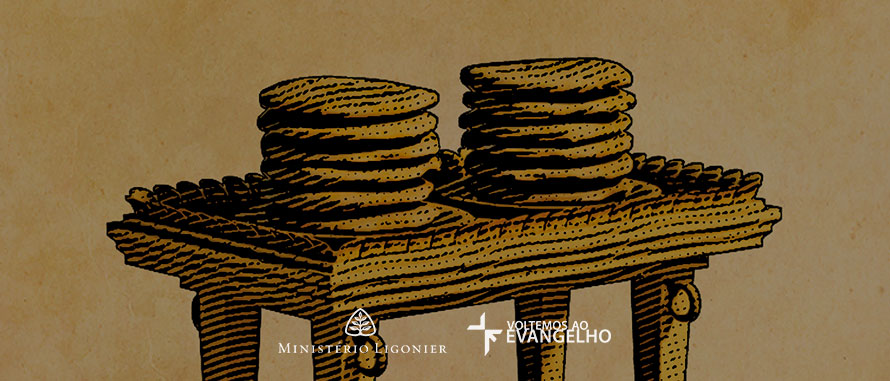For many of us, the dining table can be the most valuable place in our home, not only for the support it receives, but also for the romantic interaction that occurs with family and friends while sharing a meal. .
Our own experience of sharing a meal allows us to better appreciate the symbolism of the bread table in the tabernacle, placed on the right side of those who entered the Holy Place, the table was made of acacia wood and clad in pure gold (Ex 25 23-30; 37. 10-16), measured about one meter long, half a meter wide and seventy centimeters high , around him was a gold frame four fingers wide, attached to each of his four legs, there was a through which the rods were inserted at the time of transport; In addition, plates, vessels, jugs and bowls of pure gold were placed on the table; probably the plates and vessels contained incense, and the vats and bowls were apparently used for libations (drink offerings).
- The main objective of the table was to support? The bread of the proposal? (literally.
- Bread of the Presence?).
- Which was placed in the presence (or face) of Yahweh? (Ex 25.
- 30).
- Every Saturday.
- The priests replaced the loaves of the previous week with a new batch of hot loaves (Leviticus 24: 5-9).
- Exactly twelve loaves.
- Representing the twelve tribes of Israel.
- Were to be arranged in two rows of six.
- The loaves were a food offering presented to God.
- To be continually made as a “perpetual covenant” (Niv 24.
- 8).
Along with the other elements of the tabernacle, the painting highlights the relationship of alliance between God and his people, since Yahweh dwells with Israel in a special way. While much can be said about this board, there are two main things to keep in mind.
First, the bread table emphasizes God’s provision for Israel; God is the Creator and Lord of the covenant, who promised to redeem and care for His people; God, being the source of life, gave them daily bread (like mana in the wilderness in Exodus 16:1-36); It is also the source of eternal life and people have recognized it by participating in the ritual of offering food; they offered at the table something that God gave them in abundance, showing their gratitude and worship. the Lord of the covenant.
Secondly, the painting highlights the intimate communion that exists between God and his people. In the Bible, a shared meal was a time of intimate communion among people, especially in the context of an alliance (e. g. Abraham’s food with God in Genesis 18: 1-9). Significantly, an earlier chapter of Exodus is a wonderful example: in Exodus 24. 9-11, after God gave his law to Israel, Moses and the elders went up the mountain to eat a meal with the Lord, and the text wonderfully recounts that at that time they saw God (vv. 10-11). It was the food of the covenant that celebrated the relationship between Yahweh and Israel. The act of eating in God’s presence revealed that Israel was intimately known and loved. Just as the twelve loaves were an offering of food to the Lord and would then be eaten by the priests representing the people, the table became a perpetual reminder of the intimate communion shared between God and his people.
These elements of the Old Testament are the shadow of better realities that would come to the church in Jesus Christ (Heb 10:1); it is the most complete expression of the tabernacle and temple that represents God’s presence among his people (Mt 1:23; John 1:14). ; 2,19-21). Through him, God gave life to the Church, both now (Mt 6:11; Fil 4,19) as forever (Jn 3:16; Acts 4,12). The “Pain of presence” finally referred to Jesus as the bread of heaven (John 6:22-65) He is the bread of life (vv 35:48), the true heavenly mana (vv 30-33), and who eats his flesh and drinks his blood, that is, he who believes in himself, has eternal life (vv 51-58).
This act of nourishing Christ through faith is symbolized in the Lord’s food (1C 11. 23-26), which is no longer limited to priests, as the bread of the proposal of the old covenant. In the food of the new covenant, all believers can participate in intimate communion with the Trinitarian God, and together the Church shows that they are known and loved by Him. The Lord’s Table also indicates the glorious feast of the weddings of the Lamb, where Christ and his Church will live in eternal communion (Ps 19:6). -9) This is the table that God prepares for those who love Him, rather for those He loves.

